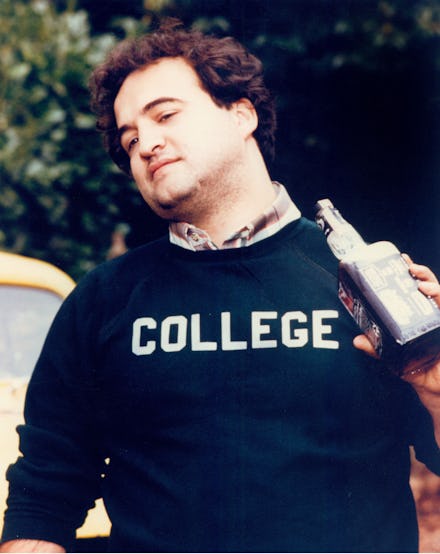5 Biggest Myths Movies Taught Us About College

While every genre can become slave to its common tropes, perhaps the genre that suffers most from this is the college film. High school films abound, and we tend to love them (especially if they're of the whimsical, 80s kind), but often college films are sorely lacking.
Take a look at the college films released over the past decade and you'll see a sad trend. Every year or so, a film comes out with a campy cover that promises the kinds of tired clichés you can already anticipate: over-the-top frat parties, absurd antics, and sex and alcohol everywhere!
These films never fail to recycle the same exhausted tropes that may have led to some of the most iconic college films in the 70s and 80s, but have since been painfully overused. Yes, there's an element of truth to these tropes, but they've been so overplayed that college — on film — becomes a caricature. Below are five of the most annoying and common of these tropes. This is college, according to Hollywood, and it's kind of a sad place.
1. Everything important happens at parties.
Oh, the notorious college party. How many scenes have we seen of houses filled with over-intoxicated, nubile youths wielding solo cups? The question of whether art imitates life or life imitates art might be valid here, as this is a scene we will likely see on screen and in real life. Yet college films seem to revolve entirely around such over-the-top scenes. The party becomes the only viable place for meaningful social interaction.
2. Frats, sororities, and athletes run campus.
Admittedly, a lot of colleges have fraternities, sororities, and athletes. However, college films would make you think that they're the only students who exist on campus (along with nerds). Legally Blonde takes a humorous stab at placing sorority girl Elle Woods in a place where she struggles to fit in. However, we have many more films where sororities and fraternities are the life blood of one's college existence. The House Bunny, for instance, revolves around the impending doom of the Zeta Alpha Zeta sorority, with an ex-Playboy bunny swooping into the rescue.
3. Freshman and senior years are the only ones that matter.
Forget the sophomores and juniors, nothing interesting happens to them! Understandably, freshman and senior year can be some of the most eye-opening and pivotal years of college: they mark one's first entrance into college and one's departure. They're also prime material for filmmakers who choose to portray the experience as one consisting entirely of crazy shenanigans.
4. Spring break is when we collectively go crazy.
There seems to exist a particularly bizarre subgenre of road trip and spring break films that chronicle the preposterous adventures of college kids on break. Though Spring Breakers has won critical acclaim (including a not-so-humble assesment from James Franco) precisely for its subversive absurdity, most spring break films seem consigned to the direct-to-DVD route.
5. Only white people go to college.
While not exactly a trope, let's admit it: this isn't a very diverse genre. Most college films cover a specific, middle-class and white experience of college. Though some films have attempted to branch out into slightly more diverse territory (monsters go to college, too!), it's safe to say that we aren't going to see much difference anytime soon.